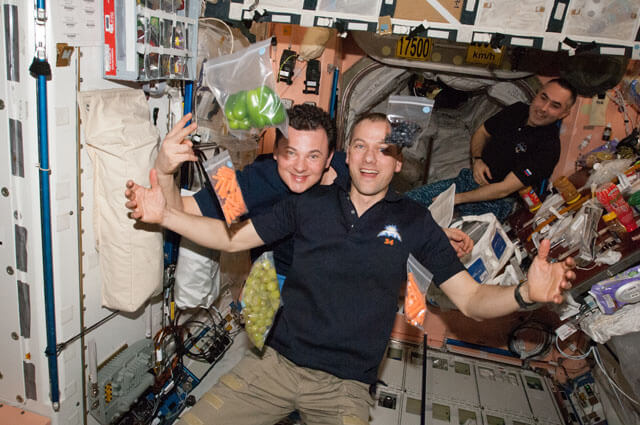NASA's Advanced Food Technology program is interested in developing methods that will provide food that meets the requirements of safety, variety, and of course nutritional stability for long missions, while using a minimal amount of spacecraft resources and personnel.

NASA has awarded a Business Innovation Research (SBIR) grant at a very early stage, to Systems and Materials Research Consultancy from Austin, Texas, for the development of XNUMXD printers for food production in space flights. There is no certainty that research at such an early stage will mature into a technology that works, and in any case, even if it does, it will take years before it is tested in a real space flight.
As NASA aims to venture into deep space, whether for an asteroid landing mission or even sending astronauts to Mars, the agency will need to make improvements to life support systems, including how to feed the crew members on the long deep space missions.
NASA's Advanced Food Technology program is interested in developing methods that will provide food that meets the requirements of safety, variety, and of course nutritional stability for long missions, while using a minimal amount of spacecraft resources and personnel. The current food system does not meet the nutritional needs and the need for a shelf life of five years required for a mission to Mars or for a longer period of time for other missions. Cooling and freezing require significant resources in spacecraft. Today, NASA supplies astronauts only with prepackaged foods that have stability and a long shelf life, processed with technologies that reduce the content of micronutrients in food.
In addition, the current space food is chosen by the astronauts according to personal recipes before leaving the ground, and the crew members do not have the ability to prepare the food themselves. During long missions, a wide variety of food is critical to ensure that crew members continue to eat an adequate amount of food and, as a result, receive the nutrients they need to maintain their health and performance.
At this stage, NASA is funding $125 for six months for XNUMXD printing of foods in order to determine if this technology could enable nutritional stability and provide a wide variety of foods made from materials with a long shelf life, while minimizing the waste of time and manpower. NASA chose this proposal because the research team, subcontractors and consultants include food taste and texture experts that may be required to develop such an innovative system. The work plan for this feasibility study was also well prepared and the technology has the potential to meet some of NASA's food requirements for long-duration missions using basic food components.
"NASA recognizes the need to meet the needs of astronauts during space travel and additive manufacturing offers the potential for opportunities to print food, tools or the entire spacecraft." XNUMXD printing is the best way to operate a spacecraft in deep space travel. That's why NASA is a leading partner in the Industry Innovation Network led by President Obama.
XNUMXD printing is just one of many innovative technologies that NASA is investing in research and development and the capabilities needed for future space missions while improving the quality of life here on Earth.

3 תגובות
What deep space programs exactly is NASA preparing for. They have canceled all the programs. The onus is on the private companies to unite and invest $20B in a deep space journey.
Technically it will be a grandfather to the 10th power of the Enterprise's food replicator... 😉